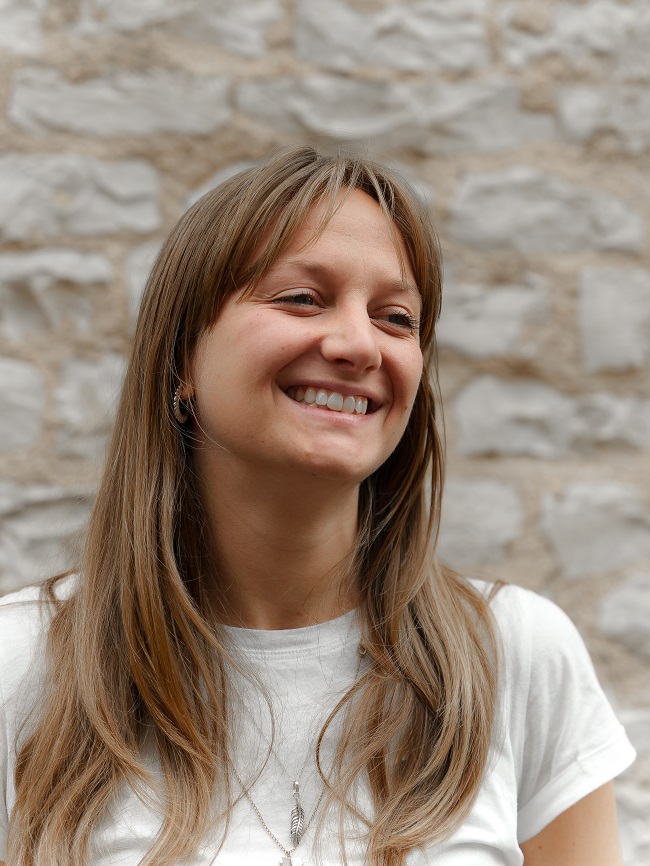Five French Figures who Championed Women’s Rights
Celebrated annually on March 8th, International Women’s Day is a focal point in the women’s rights movement. Here, we take a look at five French women who inspired and sometimes led the fight for gender equality in France.

Portrait of Olympe de Gouges
Olympe de Gouges (1748 – 1793)
While women were an integral part of the French Revolution, few voiced their political opinion publicly like Olympe de Gouges. After her husband died, she refused to remarry to be able to publish her works (women were not allowed to publish anything without the authorisation of their husband). She advocated strongly against slavery and for social justice, demanding the creation of maternity wards and shelters for homeless people, the right to divorce or the recognition of illegitimate children. A prolific writer, she produced pamphlets, novels, essays and even plays. During the Revolution, she supported the creation of a constitutional monarchy as well as ambitious social reforms. In 1791, she wrote the Declaration des Droits de la Femme et de la Citoyenne which she addressed to Marie Antoinette. In it, she proclaimed that both sexes should have equal civil and political rights. Shocked by the violence of the 1793 Terror nights, she criticised Robespierre and was arrested. She was guillotined the next day at the age of 45.

Portrait photo of George Sand taken by Nadar in1864
George Sand (1804 – 1876)
Amantine-Aurore-Lucile Dupin chose a male nom de plume to be able to publish her works in peace. Her extensive body of work includes over 70 novels and more than 50 other texts such as novellas, plays and political essays. The first novel she published as George Sand, Indiana, is a passionate protest against the binding conventions of marriage in which the heroine abandons her husband to find true love. The novel brought her immediate fame and from then on, she continued to challenge social conventions and norms by depicting rebellious female figures and describing the true feelings and preoccupations of women at the time. Her masculine clothes and turbulent love life were also the subject of controversy. She rejected the constraints of marriage and took many lovers. And, fun fact, she essentially saved the Fontainebleau Forest thanks to her knowledge on botany and natural sciences, making her a pioneering ecologist too.
Read more :

Simone de Beauvoir with Jean-Paul Sartre in Beijing in 1955
Simone de Beauvoir (1908 – 1986)
Born as a disappointment for her father who wanted a son, Simone de Beauvoir went on to become one of the most influential feminist writers of her time. Her work includes a series of novels and major philosophical essays, all published fairly late in her life and the subject of controversy. Her first novel, L’Invitée was published in 1943 and received great acclaim but it’s Les Mandarins that led her to be awarded the prestigious Prix Goncourt in 1954. At 41, she published the essay Le Deuxième Sexe in which she rejects the notion of women being naturally weaker beings, galvanising the fight for women’s rights all over the world. She wrote the Manifesto of the 343, a petition asking to legalise abortion in France, and was also the founder and first President of the Ligue Internationale du Droit des Femmes which she created in 1974 to combat violence against women. You may know this quote from her: “One is not born, but rather becomes, a woman.”

Françoise Giroud in 1998 © JJ Georges CC BY-SA 3.0
Françoise Giroud (1916 – 2003)
Françoise Giroud was a journalist, writer and political figure who passionately defended the freedom of the press but also campaigned for equal rights for women and men. As WWII came to a close, she was named director of the then brand-new magazine called Elle which claimed to be a modern and feminist publication. In 1953, she founded L’Express for which she remained Editor-in-Chief until 1974. As Secretary of State in charge of women’s rights, she announced 101 measures to fight discrimination and establish legal rights for women. A beloved figure, she made many television appearances, always fighting sexism and celebrating women’s freedom to choose their own destiny.

Simone Veil presiding over the European Parliament in 1979 © Claude Truong-Ngoc (cc-by-sa-3.0)
Simone Veil (1927 – 2017)
At the age of 16, Simone Veil was deported to Auschwitz where she lost both her parents and her brother. She survived with her two sisters. She married in 1946 and studied law and political science before pursuing a career as a senior civil servant. She entered government office as Health Minister under President Giscard d’Estaing in 1974 and immediately embarked on writing a law decriminalising abortion in France. The “loi Veil” was finally adopted in 1975. She was elected President of the European Parliament in 1979, the first woman to hold the position, and supported the creation of the Women’s Rights committee. In 1996, she signed a Manifesto for Parity which formed the basis for a law introduced in 2000 that required political parties to present equal numbers of women and men during municipal elections. She remained active in public office, becoming a member of the Constitutional Council and the Académie Française. She became the fifth woman to enter the Pantheon mausoleum in Paris.
Want to learn more about inspiring French women ?
Lead photo credit : Close up of the painting La Liberté Guidant le Peuple by Eugène Delacroix
Share to: Facebook Twitter LinkedIn Email
More in famous French women, French history
Leave a reply
Your email address will not be published. Required fields are marked *





